Maintaining the exterior of your home is a crucial part of being a homeowner or landlord. One of the most critical aspects of exterior maintenance is cleaning your roof. A clean roof not only improves your home’s curb appeal, but it also increases its longevity. When you decide to clean your roof, you might wonder whether you should choose soft washing or pressure washing. Both have their advantages and disadvantages, and it’s essential to understand them before making a decision. In this blog post, we’ll compare and contrast soft washing and pressure washing to enable you to make an informed decision.
Soft Washing, Also Known As Low-Pressure Washing
The technique involves using low-pressure water mixed with biodegradable chemicals that are safe for your roof, landscaping, and surrounding environment. Soft washing is a gentle approach to roof cleaning that can effectively remove dirt, moss, algae, lichen, and other environmental pollutants. The chemicals used in soft washing kill the bacteria and fungi that cause the stains on your roof. Unlike pressure washing, soft washing doesn’t use high-pressure water, which can damage your shingles, cause water infiltration, and void your roof warranty.
When to Use Soft Washing
Soft washing is an ideal method for cleaning roofs that have moderate to heavy buildups of algae, moss, or lichen. It’s also an excellent choice for cleaning fragile or older roofs that might sustain damage from pressure washing. If you have a wooden roof, soft washing is the only cleaning method that won’t damage the wood fibers. Finally, if your roof warranty specifies a soft wash cleaning method, choosing another method may void the warranty.
Pressure Washing: Using High-Pressure Water
Pressure washing involves using high-pressure water to blast away any dirt, grime, moss, algae, or other debris on your roof. Pressure washing is an effective way to clean extremely dirty roofs quickly. However, the high-pressure water can be damaging to asphalt shingles, clay tiles, and other roofing materials. If not done correctly, pressure washing can dislodge shingles and cause water infiltration, leading to expensive repairs. It’s important to choose a skilled professional who knows how to use the right equipment and techniques to avoid unnecessary damage.
When to Use Pressure Washing
Pressure washing is an ideal method for cleaning roofs with a light to moderate buildup of dirt and grime. If your roof has a hard surface like concrete tiles or a metal roof, pressure washing is an effective way to remove stubborn stains. However, pressure washing is not recommended for fragile or older roofs, as the high-pressure water can cause extensive damage.
Choosing between soft washing and pressure washing for your roof cleaning needs depends on several factors.
Soft washing is ideal for fragile or older roofs that might sustain damage from high-pressure water and for roofs with moderate to heavy buildup of algae, moss, or lichen. On the other hand, pressure washing is ideal for removing dirt, grime, or debris from hard surfaces and roofs with a light to moderate buildup of stains. It’s crucial to choose a skilled professional for either method to ensure that your roof is not damaged during the cleaning process. If in doubt, consult with a roofing professional who can guide you on the best cleaning method for your roof.


